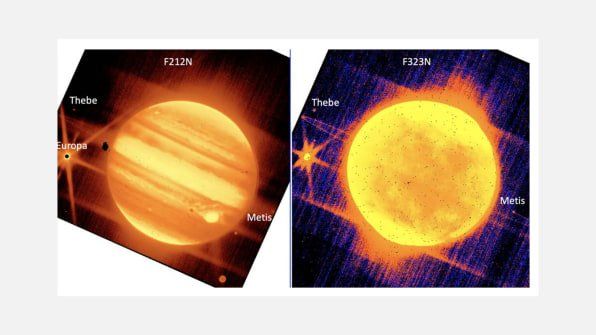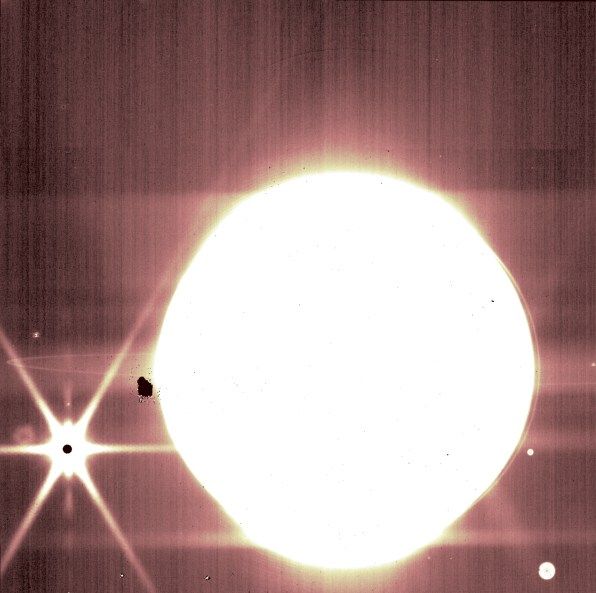The James Webb Space Telescope’s magnificent first photos, which scientists will dissect for years to come, have been feted this week in a parade of debuts from NASA.
advertisement
advertisement
After a flurry of deep space images were unveiled Tuesday —showing technicolor clouds of cosmic nebulae, and a sky speckled with galaxy clusters over 13 billion light-years away—another set of images was released Thursday , showing a more familiar, but no less illuminating view of Jupiter, a planet within our own humble solar system.
Captured as an early test of the telescope’s instruments before it roved further into the universe, the Jupiter images reveal the gas giant in stunning detail, including its rings and several of its moons, Europa, Thebe, and Metis.

Webb’s ability to see Jupiter’s hazy rings is especially rare. The rings are formed as small meteors continually collide with Jupiter’s moons, kicking up dust particles that are just lightweight enough to escape lunar gravity and be pulled into orbit around the massive planet. They exist so tenuously, that they eluded detection for decades, until 1979’s Voyager 1 expedition journeyed to the dark side of Jupiter and looked backward, discovering a thin silhouette of rings against the sun.
advertisement

Webb’s images also show Jupiter’s iconic bands, formed by alternating zones of atmospheric gas, as well as its famous Great Red Spot, where a storm big enough to engulf our Earth rages on its surface.
“Combined with the deep field images released the other day, these images of Jupiter demonstrate the full grasp of what Webb can observe, from the faintest, most distant observable galaxies to planets in our own cosmic backyard that you can see with the naked eye from your actual backyard,” Bryan Holler, a scientist at Baltimore’s Space Telescope Science Institute who helped to map out the observations, said in a statement.
For astronomers, the data was proof that Webb can detect faint objects like satellites or rings even when they are near very bright celestial bodies like Jupiter, Saturn, or Mars. (In some images, Europa’s shadow is visible near Jupiter’s red spot.) That level of resolution could allow Webb to carry out what astronomers now hope is their next mission: to observe plumes of water erupting from Europa’s underground ocean, spewing through its icy crust and into space—as well as similar phenomena occurring on Saturn’s moon, Enceladus. Such study could yield insight on the composition of these oceans, which some believe could harbor the closest alien life in the Milky Way galaxy.
advertisement
Beyond that, the test results also shed light on Webb’s ability to track objects hurtling through space at high velocities. Jupiter—which orbits the sun at roughly 29,000 miles per hour—clocks in at an apparent speed of 3.3 milliarcseconds per second from where the Webb telescope is stationed (milliarcseconds are a measure of degrees traveled within its field of vision). However, the telescope’s tracking of an asteroid flying between Mars and Jupiter demonstrated that Webb could follow objects moving up to 67 milliarcseconds per second—more than twice the maximum for which it was engineered.
But to throw the universe into perspective: However fast these objects are moving in absolute time, the sheer vastness of space still dwarfs. As NASA puts it, Webb photographing a 67 milliarcsecond-per-second target would be like you photographing a turtle crawling, a mile away from where you’re standing.
advertisement
advertisement
advertisement
advertisement
All Rights Reserved | thetechnetwork.io
All Rights Reserved | thetechnetwork.io





